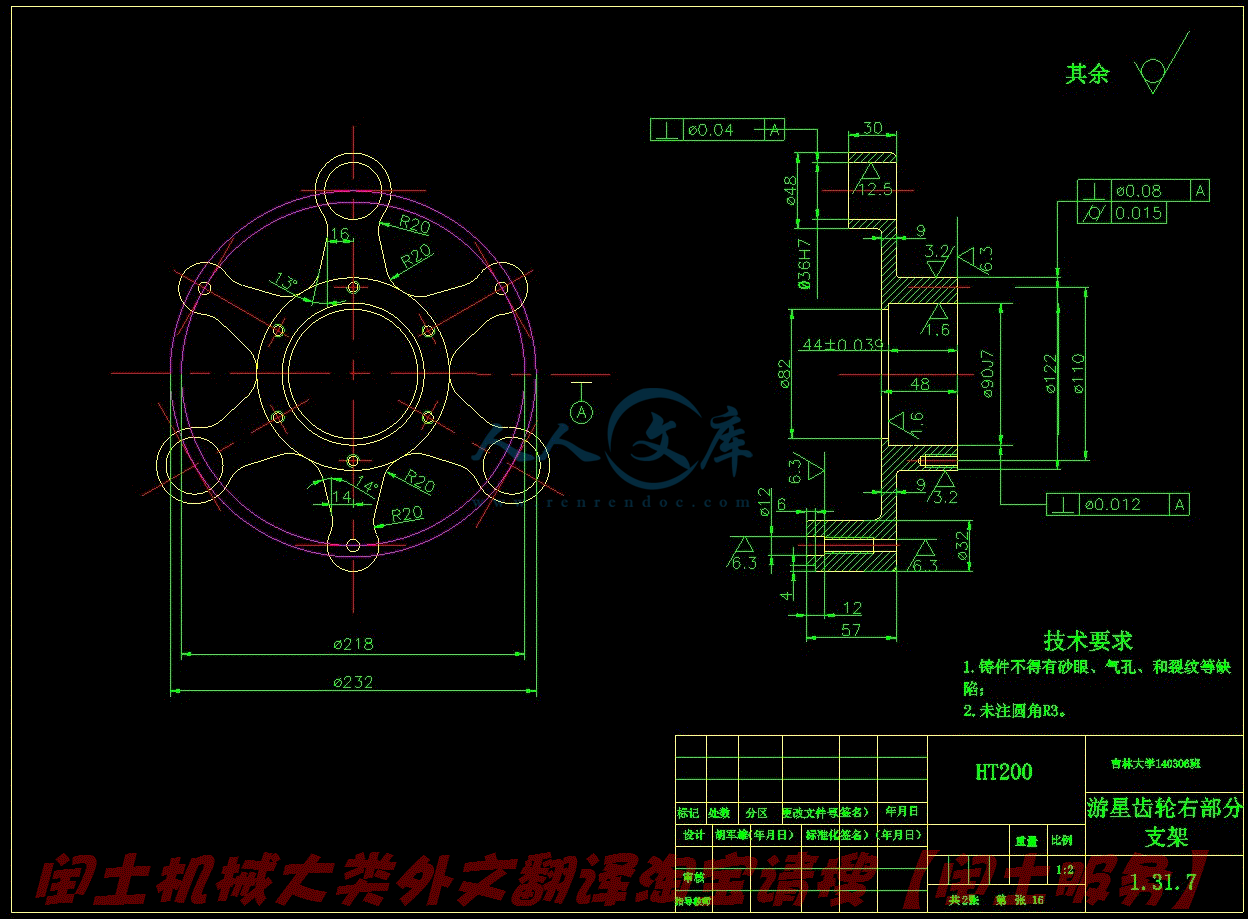资源目录

压缩包内文档预览:(预览前20页/共28页)
编号:6035129
类型:共享资源
大小:6.01MB
格式:RAR
上传时间:2017-10-23
上传人:闰***
认证信息
个人认证
冯**(实名认证)
河南
IP属地:河南
50
积分
- 关 键 词:
-
xy-4
岩心
钻机
升降机
设计
- 资源描述:
-



















- 内容简介:
-
Login: RegisterAthens/Institution Login Not Registered? User Name: Password: Remember me on this computer Forgotten password?Athens/Institution Login Not Registered? User Name: Password: Remember me on this computer Forgotten password? HomeBrowseSearchMy SettingsAlertsHelpQuick SearchTitle, abstract, keywordsAuthore.g. j s smith Journal/book titleVolumeIssuePage59 of 370 Ecological Modelling Volume 166, Issues 1-2 , 1 August 2003, Pages 19-39 This DocumentSummaryPlus Full Text + Links Full Size ImagesPDF (552 K) doi:10.1016/S0304-3800(03)00100-5 Copyright 2003 Elsevier Science B.V. All rights reserved. Modelling potential effects of petroleum exploration drilling on northeastern Georges Bank scallop stocks Peter J. Cranford , , Donald C. Gordon, Jr. , Charles G. Hannah, John W. Loder, Timothy G. Milligan, D. K. Muschenheim and Y. Shen Department of Fisheries and Oceans, Maritimes Region, Bedford Institute of Oceanography, P.O. Box 1006, Dartmouth, Nova Scotia B2Y 4A2, Canada Received 6 November 2001; revised 5 August 2002; accepted 19 February 2003. ; Available online 21 May 2003. AbstractA set of numerical models was used along with laboratory and field observations to evaluate the potential risk of exploratory oil and gas drilling on northeastern Georges Bank to sea scallop (Placopecten magellanicus) stocks. The models were used to predict the drilling waste zone of influence and the impact of chronic exposure on scallop growth and reproduction. Growth and reproduction are generally considered to be the most important sublethal effects of chronic contaminant exposure. The highest near-bottom concentrations of drilling waste (water-based mud) from a hypothetical 92-day exploration well was predicted to occur along the side of the bank (100 m depth). Laboratory information on drilling mud toxicity threshold concentrations indicated a potential for 048 days of growth inhibition depending upon the site, settling velocity of the mud, and area over which results are averaged. Scallop stocks on the side of the bank are relatively sparse, but dense aggregations are ActionsCited BySave as Citation AlertE-mail ArticleExport Citationfound in some areas and it is possible that changes in reproductive output could have detectable effects at the population level. Growth inhibition in the tidal front region, which has the densest scallop stocks, was predicted to be more localised and confined to a range of 015 days. Growth loss in the central mixed region (100 m depth) were predicted to be exposed to substantial waste concentrations as far as 2040 km from the release point (Fig. 5). In the frontal region, exposure to high concentrations was more localised (within 2 km of the release point) and the sites with the highest potential exposure are NEP, GBFS2, and SNEP. Predicted near-bottom waste exposure was lowest in the mixed region of the Bank. (24K) Fig. 4. Time-integrated near-bottom concentrations (total potential exposure) at various distances along the primary drift line at bblt model application sites (Fig. 1) forced by observed currents ( Table 1) for the first 62 days of the drilling waste release scenario ( Fig. 2). Results are shown for settling velocities (ws) of 1 mm s1 (left) and 5 mm s1 (right). The starting date (Julian) of each bblt run is given in parenthesis by the site name. Note the different scales on the vertical axis. (22K) Fig. 5. Time-integrated near-bottom concentrations (total potential exposure) at various distances along the primary drift line at bblt model application sites (Fig. 1) forced by 3-D model currents ( Table 2) for the first four sections (62 days) of the drilling waste release scenario ( Fig. 2). Results are shown for settling velocities (ws) of 1 mm s1 (left) and 5 mm s1 (right). Sites are identified by node numbers from the 3-D model and names are given in parenthesis. Note the different scale on the vertical axis. Waste exposure predictions for different summertime starting dates (Julian Days 189 and 217) were generally similar at all sites (Fig. 4). Model-forced applications for sites in the frontal (GBFS2) and side (GBFS1) regions of Georges Bank indicate that waste concentrations in winter are lower than in summer ( Fig. 3). However, waste concentrations at NEP, where bblt was forced by observed currents, were higher in winter than summer ( Fig. 4), in part due to reduced drift across the Northeast Peak in winter. The reduced winter concentrations at the GBFS2 site reflect the increased boundary-layer thickness associated with reduced stratification and increased vertical mixing in winter and are also expected for other frontal sites near the bank edge. The reduced winter concentrations at the GBFS1 site are associated with the stronger tidal currents in winter predicted by the 3-D model, and are of uncertain reliability (although reduced concentrations are expected from amplified wave and wind influences in winter). 3.2. Potential effects on scallop growthThe results of the model applications can be summarised as follows, grouped according to the physical oceanographic zone on the Bank in which the site is located (Fig. 1). The results were expressed as the total number of days of PGI during drilling of the exploration well sections assuming that scallops are present everywhere in the model domain and that growth is continuous throughout the year. In actuality, as discussed later, scallops are very patchy in distribution and growth rate varies seasonally so that the predicted impacts of a given case depends upon the location of scallop beds relative to the release point and the timing of drilling. PGI estimates at sampling sites along the primary drift direction are shown for cases forced by observed ( Fig. 6) and 3-D model currents (Fig. 7), and a ws value of 5 mm s1. PGI for each site and mud settling velocity, averaged for all sampling locations within different distances from the release point, are given in Table 3 and Table 4. (25K) Fig. 6. Summary plots of the total days of PGI along the primary drift axis during exploration drilling at the model application sites. Potential impacts are shown for the first 62 days (upper) and remainder (lower) of the drilling waste release scenario (ws=5 mm s1). Model forcing was by observed currents and the start day (Julian) is shown in parenthesis. (21K) Fig. 7. Summary plots of the total days of PGI along the primary drift axis during exploration drilling at the model application sites. Potential impacts are shown for the first 62 days of the drilling waste release scenario (ws=5 mm s1). Predictions are shown for model sampling locations along the primary drift axis. The bblt model was forced by summer (September and October) and winter (January and February) currents predicted by the 3-D circulation model. Table 3. Total days of PGI for sea scallops (P. magellanicus) calculated from output from the local bblt model with observed current forcing The different application site locations are indicated in Fig. 1. PGI for each application was averaged over a radius of 0, 2, 5 and 10 km from the discharge site, and along the primary drift line out to 3050 km. An asterisk indicates that growth inhibition was greater than 10% over the simulated period.Table 4. Total days of PGI for sea scallops (P. magellanicus) calculated from output from the local bblt model with 3-D model current forcing Predictions are for the first 62 days of the hypothetical discharge scenario at different applications sites indicated in Fig. 1. PGI for each application was averaged over a radius of 0, 2, 5 and 10 km from the discharge site, and along the primary drift line out to 3050 km. An asterisk indicates that growth inhibition was greater than 10% over the simulated period.The model applications for the mixed region on the top of the Bank (GBFS4) were forced by current meter data and the net drift of the sediment plume was to the south (Table 1). There was just one location where growth inhibition exceeded 1 day and that was at the release point and this was indicated only at the higher settling rate ( Fig. 6, Table 3). There was no growth inhibition predicted at any of the sites in the frontal region at the lower settling rate (Table 3 and Table 4). At the higher settling rate, PGI during the first 62 days of the drilling scenario ranged on the order of 218 days at the release point and 05 days within a 10 km radius (Table 3 and Table 4). Growth lost during the remainder of the scenario was 3545% of the 112 days total PGI ( Table 3). The area in which scallop growth is potentially inhibited for more than 10% of the 112-day discharge period was approximately 2 km2 for all frontal sites (Fig. 1) except at SNEP during summer and NEP during winter, which have potential impact zones (10% PGI) of approximately 12 and 78 km2, respectively. Unlike the NEP site, PGI at GBFS2 was lower in winter than summer (Table 4). Model applications for sites located in the stratified side region indicated that scallop growth inhibition may occur even if settling velocity is relatively low. For ws=1 mm s1, PGI at the release point during the first 62 days of the drilling scenario ranged between 0.2 (Hunky Dory) and 9.5 (GBFS1) days. For ws=5 mm s1, the predicted impact for this same area and drilling period was much higher and ranged between 14 and 32 days or 2252% of the discharge period (Table 3 and Table 4). Growth effects generally dropped with distance from the release point, but PGI estimates based on the higher settling velocity are on the order of 10 days as far as 40 km from the drilling site along the primary drift line at GBFS1, Growler and Hunky Dory during drilling of the first four sections of the well (Fig. 7). The spatial extent of sublethal effects at GBFS1 is smaller during winter ( Fig. 7) and for the final well section ( Fig. 6). When PGI estimates for GBFS1 are totalled for the two time periods and all values are averaged over sampling locations along the 50 km primary drift line, a total of 18 days of growth inhibition is predicted during the 112-day drilling scenario. Stations located off the drift line indicated a similar impact on growth out to a radius of about 2 km. Therefore, assuming the higher settling velocity, the potential area in which scallop growth is inhibited for 18% of the exposure period may be on the order of 150 km2 (2 km25 km). 4. Discussion4.1. Potential impacts on Georges Bank scallop growthThe interpretation of the results from these bblt applications on Georges Bank depends upon several factors which include the location of the release site, the distribution of scallop stocks and the time of year at which the wastes are released. Release sites that were closest to high scallop densities tended to have a greater chance for impacts, but the impacts also depended on waste concentration and net drift direction. The three application sites on the side of the Bank, where bottom stress (and hence suspension) and dispersion are lowest, have the highest predicted near-bottom drilling waste concentrations, and therefore the highest potential for scallop growth impairment (Table 3 and Table 4). The GBFS1 site is in an area of low scallop abundance ( Fig. 8) and the net drift of the near-bottom discharge plume was predicted to be north east (Table 1 and Table 2), generally away from the scallop beds. However, inclusion of spatial variation in the currents and depth at this site using a spatially variable version of bblt ( Xu et al., 2000) indicates that drift and dispersion onto the bank may be underestimated with local bblt. Growler is also located in an area of low scallop abundance, but net drift at this site was predicted to be onto the Bank ( Table 2) so some distant effects are possible. Hunky Dory is located in an area of moderate scallop density and wastes released at this site have a much greater potential of coming into contact with scallop stocks and affecting growth. Assuming a waste settling velocity of 5 mm s1, scallop growth could be inhibited for up to 17% of the drilling period at a distance of 40 km along the primary drift line. Given that the waste stream at this site can be up to 10 km wide (Fig. 3), this sublethal impact zone may exceed 200 km2. (21K) Fig. 8. Location of the bblt application sites on Georges Bank in relation to scallop stocks. Stock distributions were calculated based on average catch statistics from 1993 to 1997. The net direction of the sediment plume at each site during summer is indicated by the arrows. The greatest scallop densities are located throughout much of the frontal zone with maximum catches recorded in the northern area near GBFS2 and GBFS6 (Fig. 8). High to moderate densities are also found near the ENEP and SNEP sites, but catches have been relatively low in the area around NEP. Potential scallop growth inhibition by drilling wastes within the frontal region appeared to be confined primarily to the release point ( Fig. 6 and Fig. 7), where a maximum of 19 days of growth inhibition was predicted for the GBFS2 site for the entire scenario ( Fig. 6, Table 3). The results suggested less than 10 days of growth inhibition at distances of 10 km along the drift line at SNEP and NEP. Despite the presence of moderate scallop densities at GBFS4, this site on the top of Georges Bank (Fig. 8), has the lowest potential for impacting scallop stocks due to the high bottom stress and strong shear dispersion that rapidly redistribute and dilute, both horizontally and vertically, the wastes. 4.2. Confidence in model resultsThere is a moderate to high degree of confidence in the reliability of bblts representation of the important physical processes which control sediment dispersion and transport. Realistic representations of spatial and temporal variability in bottom shear stress, horizontal currents and associated vertical shears, and vertical mixing are included (Hannah et al., 1995, Hannah et al., 1998 and Loder et al., in preparation). The 3-D circulation model has been shown to provide a good representation of the predominant seasonal-mean and tidal flows on Georges Bank ( Lynch and Naime, 1993, Naimie, 1995, Horne et al., 1996 and Naimie, 1996). The present applications use the local version of bblt in which the physical conditions are uniform over the entire model domain, which can extend out from the release point as far as 50 km. In reality, physical conditions on Georges Bank can change markedly over distances of just a few kilometres, so confidence in model output drops with increasing distance from the release point. Evaluations using the spatially variable version of bblt indicate that local bblt generally tends to underestimate dispersion rates, and hence overestimate waste concentrations (Hannah et al., 1998 and Xu et al., 2000). The additional influences of horizontal variability can result in reduced or increased concentrations (such as the increased on-bank drift noted for GBFS1) depending on the site. The effect of spatial variability in physical conditions around a particular site on the predicted near-bottom concentrations is considered to be relatively small compared to those from settling velocity. Laboratory experiments indicate that drilling wastes flocculate rapidly in seawater, and therefore have high effective settling velocities (Milligan and Hill, 1998). Observations at the CoPan production site on Sable Island Bank (34 m depth) indicate that drilling waste flocs are most concentrated near the seabed and can be seen as far as 8 km from the release point during development drilling (Muschenheim and Milligan, 1996). The expected range of settling velocities was estimated using measured drilling waste concentration profiles around the CoPan site, but it appears that these measurements did not fully resolve the dense mats of flocculated drilling wastes seen in video images. Thus, higher effective settling velocities (5 mm s1) are possible, which would increase near-bottom concentrations and scallop growth impacts by several fold above the present model predictions. However, this is unlikely to occur under the tidally-energetic conditions on Georges Bank as the size of drilling mud flocs would be limited by the relatively high turbulence levels (Milligan and Hill, 1998). The biological effects thresholds are based on the results of extensive laboratory experiments conducted with adult scallops. The zero growth threshold for barite had to be estimated but is reasonable based on measured physiological effects (Cranford et al., 1999) and growth measurements from recent chronic exposure experiments with barite (Cranford, unpublished data). An implication not considered here is how the suspension of natural sediments, which contains organic matter that may be exploited as food by sea scallops ( Grant et al., 1997), interacts with the drilling wastes. There is also some uncertainty whether flocculation, which was limited in the laboratory experiments, influences the toxicity of drilling wastes. Considering that the larger water-based mud cuttings had a much lower impact on scallops than bentonite and barite, natural aggregation processes may mitigate the effects of fine particulate wastes on scallop feeding behaviour. This is suggested by observations that sea scallops exposed to aggregated bentonite in the laboratory did not reduce feeding rate ( White, 1997) as was observed for scallops feeding on disaggregated bentonite ( Cranford and Gordon, 1992). However, field observations of sea scallops feeding on flocculated suspensions ( Cranford et al., 1998) showed that the natural flocs were more fragile than the flocs prepared in the laboratory and are easily disrupted by the animals feeding processes. Once the flocs are disaggregated, the scallop would be exposed to a similar size spectra of partic
- 温馨提示:
1: 本站所有资源如无特殊说明,都需要本地电脑安装OFFICE2007和PDF阅读器。图纸软件为CAD,CAXA,PROE,UG,SolidWorks等.压缩文件请下载最新的WinRAR软件解压。
2: 本站的文档不包含任何第三方提供的附件图纸等,如果需要附件,请联系上传者。文件的所有权益归上传用户所有。
3.本站RAR压缩包中若带图纸,网页内容里面会有图纸预览,若没有图纸预览就没有图纸。
4. 未经权益所有人同意不得将文件中的内容挪作商业或盈利用途。
5. 人人文库网仅提供信息存储空间,仅对用户上传内容的表现方式做保护处理,对用户上传分享的文档内容本身不做任何修改或编辑,并不能对任何下载内容负责。
6. 下载文件中如有侵权或不适当内容,请与我们联系,我们立即纠正。
7. 本站不保证下载资源的准确性、安全性和完整性, 同时也不承担用户因使用这些下载资源对自己和他人造成任何形式的伤害或损失。

人人文库网所有资源均是用户自行上传分享,仅供网友学习交流,未经上传用户书面授权,请勿作他用。
 川公网安备: 51019002004831号
川公网安备: 51019002004831号